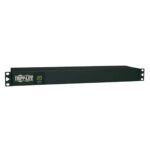Mastering Auctions: A Guide to Reverse Auction Software

In today’s fast-paced business landscape, organizations are continuously seeking ways to optimize their procurement processes. One innovative method that has gained traction is the reverse auction. This bidding process not only fosters competitive pricing but also enhances transparency and efficiency. To effectively leverage this tool, many businesses turn to reverse auction software. This guide will explore what reverse auctions are, their benefits, and how to master them using the right software.
Understanding Reverse Auctions
A reverse auction flips the traditional auction model on its head. Instead of buyers competing to purchase items at the highest price, suppliers compete to offer the lowest price for goods or services. This method is especially beneficial for organizations looking to procure commodities, services, or even project bids.
In a reverse auction, the process typically unfolds as follows:
Preparation: The buyer clearly defines their needs and establishes criteria for the auction.
Supplier Participation: Qualified suppliers are invited to participate in the auction.
Bidding Process: Suppliers submit their bids, often in real-time, while seeing how their offers compare to others.
Winning Bid: The auction concludes when the time runs out, and the supplier with the lowest bid typically wins the contract.
This format encourages competition among suppliers, often resulting in significant cost savings for the buyer.
Benefits of Using Reverse Auction Software
Using reverse auction software brings numerous advantages to organizations seeking to implement this innovative approach to procurement:
Cost Savings
The primary benefit of a reverse auction is the potential for substantial cost savings. As suppliers compete to underbid each other, buyers can secure lower prices than they might through traditional procurement methods.
Efficiency
Reverse auctions streamline the procurement process. The software automates many aspects, reducing the time and resources needed to conduct traditional negotiations and bid comparisons.
Increased Transparency
The auction process is transparent, allowing all participants to see bids and progress in real-time. This transparency fosters trust among suppliers and can lead to better long-term relationships.
Enhanced Supplier Relationships
By using a reverse auction platform, buyers can establish connections with multiple suppliers, expanding their network and potentially leading to better service and quality in the future.
Data Insights
Reverse auction software often includes analytics tools, providing valuable insights into spending patterns, supplier performance, and market trends. This data can help businesses make more informed procurement decisions in the future.
To fully leverage these benefits, it’s essential to choose the right reverse auction software that aligns with your organization’s needs. You can find out more about the features and functionalities that top-rated platforms offer.
Key Features to Look for in Reverse Auction Software
When selecting reverse auction software, consider the following features to ensure it meets your organization’s requirements:
User-Friendly Interface
A software platform should have an intuitive interface that allows both buyers and suppliers to navigate easily. The easier it is to use, the more likely suppliers are to participate.
Real-Time Bidding
Real-time bidding capabilities are crucial for creating a competitive atmosphere. Suppliers should be able to see how their bids stack up against competitors, encouraging them to adjust their offers dynamically.
Comprehensive Reporting Tools
The ability to generate reports on auction results, supplier performance, and pricing trends is vital. These insights help organizations analyze the effectiveness of their auctions and improve future procurement strategies.
Customizable Settings
Every organization has unique procurement needs. The software should allow customization of auction settings, such as bid increments, auction duration, and supplier qualifications, to align with your specific requirements.
Integration Capabilities
Ensure the software can integrate with your existing procurement systems and tools. This integration can streamline processes and enhance overall efficiency.
Supplier Management Features
Look for platforms that offer supplier management functionalities. This includes tools for tracking supplier performance, managing communications, and maintaining an updated supplier database.
For a comprehensive look at the best reverse auction software options available, you can click to read more about various platforms and their offerings.
How to Master Reverse Auctions
Mastering reverse auctions requires a strategic approach. Here are some actionable tips to help you succeed:
Define Clear Objectives
Before initiating an auction, clearly outline your goals. What do you hope to achieve? Are you focusing solely on price, or are there other factors, such as delivery timelines and quality, that are equally important?
Prepare Detailed Specifications
Suppliers need precise information to provide accurate bids. Create detailed specifications for the goods or services you are procuring, outlining quality standards, quantities, and any other relevant details.
Prequalify Suppliers
Invite only qualified suppliers to participate in your auction. This step helps ensure that all bidders can meet your requirements, leading to a more competitive and fruitful auction process.
Conduct a Mock Auction
Before the real auction, consider conducting a mock auction. This practice helps familiarize suppliers with the process and reveals any potential issues with the software or your auction settings.
Engage Suppliers During the Auction
Keep communication open during the auction. If suppliers have questions or need clarifications, addressing their concerns can enhance their participation and encourage competitive bidding.
Analyze Results Post-Auction
After the auction concludes, review the results thoroughly. Analyze supplier bids, identify patterns, and gather insights that can inform your future procurement strategies. Utilize the reporting features of your software for this analysis.
Conclusion
Mastering the art of reverse auctions can significantly enhance your procurement process, leading to cost savings, improved supplier relationships, and increased efficiency. By leveraging the right reverse auction software, you can streamline the bidding process and foster a competitive environment among suppliers.
As you explore your options for reverse auction software, remember the key features that can help you achieve your goals. With the right tools and strategies in place, you can unlock the full potential of reverse auctions in your organization.
If you’re ready to dive deeper into the world of reverse auctions and discover the best software solutions available, don’t hesitate to click this link here now for a detailed comparison of top platforms. Embrace this innovative procurement method and position your organization for success in today’s competitive market.






